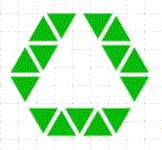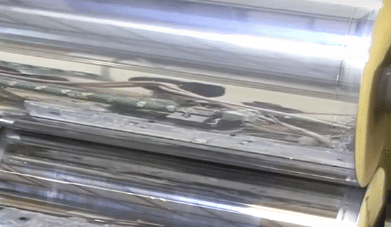The surface roughness value of many manufactured corrugator rollers are particularly important for engineers to know about, this article updated January 2023.
What is it & how do you measure it?
Let us look at a few values of what is involved in this subject, to many new readers this may be the first time they have ever heard or come across it in their daily work. On the production line you will not meet this particular problem early in the life of a new Corrugator.
But later, new people on the production line may not have seen or know about how to handle this situation firsthand.
More experienced operators will likely have had to deal directly with this problem in the past. Therefore they will recognise immediately what is happening and what to do about it and whom in the organisation to approach to have the necessary work performed ASAP.
Surface Roughness
I am not going into any depth in the different formulas used in this subject, but to just touch on some of them that are in use every day!
Three components make up the texture of any surface: Roughness, Waviness & Form.
Ra = Roughness Average
CLA = Centre Line Average
RMS = Root Mean Square
AA = Arithmetic Average
Rt = the maximum Peak to Valley height in a sample
N** = ISO grade numbers for Roughness Value
Surface Roughness Values
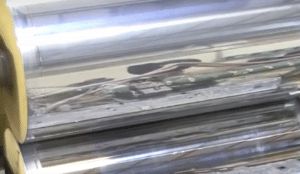
Roughness Average = Ra can be measured and is usually expressed in CLA or AA. It is measured in microinches, (m”) or in microns (mm).
The Direction of Lay is the direction of the predominant surface pattern, usually defined by the production technique or process.
This is the basic Surface Roughness Symbol on a technical drawing!
√
If you look at a technical drawing you will see the surface finish symbol, and alongside it the required measurement, for example, “N5”, or “Ra = 0.004 mm”, or “CLA = 16”.
If you are looking at a technical drawing of many different surface roughness finishes, then they may be grouped in an index, matrix, or table form, on one side of the drawing.
Where each finished surface roughness value is indicated by a key number or symbol.
Conversation Table
Below I have given you a short surface roughness chart or guide to help you understand how to measure surface roughness on an area of roller under inspection.
Here is a common conversation table with ISO grade numbers for Roughness “N”
| Roughness, N | Roughness values, Ra | RMS (µin.) | Centreline avg., CLA | Roughness, Rt | |
| ISO grade numbers of | micrometres (µm) | microinches (µin.) | (µin.) | (µm) | |
| N12 | 50 | 2000 | 2200 | 2000 | 200 |
| N11 | 25 | 1000 | 1100 | 1000 | 100 |
| N10 | 12.5 | 500 | 550 | 500 | 50 |
| N9 | 6.3 | 250 | 275 | 250 | 25 |
| N8 | 3.2 | 125 | 137.5 | 125 | 13 |
| N7 | 1.6 | 63 | 69.3 | 63 | 8 |
| N6 | 0.8 | 32 | 35.2 | 32 | 4 |
| N5 | 0.4 | 16 | 17.6 | 16 | 2 |
| N4 | 0.2 | 8 | 8.8 | 8 | 1.2 |
| N3 | 0.1 | 4 | 4.4 | 4 | 0.8 |
| N2 | 0.05 | 2 | 2.2 | 2 | 0.5 |
| N1 | 0.025 | 1 | 1.1 | 1 | 0.3 |
Credit for this chart goes to Wikipedia.org.
If you wish to see a more in-depth view of this subject, Click Here
Roller Surface Roughness
In many industries, this is a dominant factor that is used every day by engineers, especially in the grinding & lapping of high-precision-made rollers and cutting blades where the surface finish is particularly important.
In the solid fibreboard & corrugated board industries, many of these machines are made up of many kinds of different rollers. These rollers have got a defined surface finish, and geometry for the overall machine to achieve maximum running performance.
These are machines that rely on high-precision rollers, manufactured to close tolerance and surface finish. However, this condition wears down over time, as the precision surface becomes deformed or worn on rollers after long hours of use.
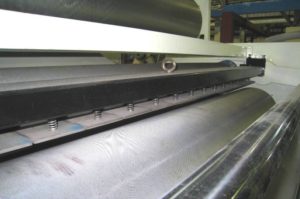
There comes a point when it becomes apparent, that production of the board no longer meets expected quality or specifications. One obvious factor that shows up when this point is approaching!
Machine speed…?
Deteriorating Surface Finish
It will be noticeable that the machine speed starts to decrease, as the operators try to maintain the quality of a given product within specification limits. As the operators start to lower the machine speed to achieve quality targets set for the product, they are manufacturing.
The time to change the worn rollers is imminent, as higher line speeds of production are unable to be maintained and quality begins to decrease. Which in turn reduces the overall production quantities or targets expected from this machine per day!
The time comes to replace the rollers with new ones or refurbished rollers. As the cost of either option is very costly, especially if the rollers that need to be changed, are the flute rollers!
These rollers are at the very heart of the corrugating manufacturing process. They are made to an extremely high spec and are used in pairs or a set for their lifespan.
Luckily, these rollers in most modern corrugators are mounted in cassettes. This means they are changed very easily and fast! It takes about 15 to 20 minutes to change a cassette!
After which your corrugator can start up again. The main reason as to why the time to change over can take this length of time, of 15 to 20 minutes on older corrugators, is not only the actual fitting of the cassette! But rather, to allow the new rollers to heat up to full working temperature with high-pressure steam.
Another Time Saver!
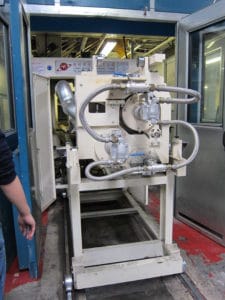
This applies to older machines, where they do not have a cassette pre-heating facility to warm up the cassette before fitting. When this facility is available then the corrugator can start up immediately after the cassette is in place.
This is another time-saver to have on your corrugator to reduce downtime to a minimum.
With the use of Cross & Vee blocks and hydraulic clamps, to secure the cassette in place, this is a speedy operation. Your new cassettes are replaced or changed over to pinpoint accuracy every time!
Should it be backing rollers, pressure, or glue rollers, then this will take much longer. Planned machine downtime will be required on most corrugators to replace these rollers or their modular units.
There may be times when the machine becomes available because that section of the corrugator can be bypassed. When the board or web material can be fed through the corrugator on a different web path.
Then this section or machine module is safely isolated and becomes accessible to the maintenance crews to do their work. Although in this state, the corrugator is not working at full capacity. However, it means that the corrugator production continues to run at full speed, subject to material conditions allowing.
Corrugator Roller Re-Surfacing
In many instants, the original rollers can be built up by thermal ceramic fusion or electro-plated methods before they are reground to achieve their original dimensions. This involves the use of a specialist workshop that is fully equipped to do this kind of work.
They require some of the most sophisticated modern grinding machines available to produce the desired flute form correctly. Some of the larger corrugating board manufacturers have their own dedicated workshops for their own roller repair facilities.
This allows them to always have a selection of rollers on stand-by, so minimum interruption to their production facilities will exist. These companies usually have several corrugating manufacturing plants, so it pays them to have their own in-house roller manufacturing and repair resources.
In-house Roller Facility to Test Surface Roughness
Having this in-house facility means that their stock of rollers is kept in maximum condition and never allowed to become worn below minimum tolerances. This in return means that their costly manufacturing plants rarely operate below maximum running speed for the product being manufactured at any one time.
Yes, there are many other corrugating plants that work closely with outside roller repair workshops that work equally as well. In the end, it comes down to having a good team of engineering management, with a great working strategy.
This in turn means, that they have a high-speed high-volume manufacturing plant, which generates a high return on their investment. These are the companies that have an elevated level of technology operating across all areas of their plants. Their operating engineering crews will carry an advanced set of technologies with them. And through this skill set the company stands to benefit greatly in developing new products and generally has great financial growth & potential.
Modern automation and computing facilities are utilised and this will allow them to be at the forefront of many technologies. This atmosphere of innovation and achievement drives important levels of production, which operate at high speeds, producing large volumes of the best quality product available.
How are Corrugated Boxes made?
.
